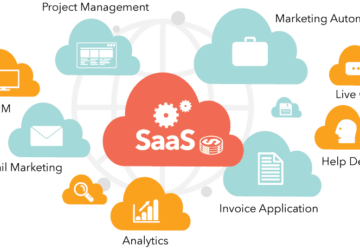The retail landscape has undergone a remarkable transformation in recent years, driven by the rapid growth of e-commerce and advancements in technology. The convergence of online shopping, digital payments, and innovative customer experiences has reshaped how businesses interact with consumers. In this blog post, we’ll explore the evolution of e-commerce and how businesses can leverage technology to achieve modern retail success.
The Rise of E-Commerce
E-commerce, or electronic commerce, involves buying and selling goods and services over the internet. What started as a modest online marketplace has evolved into a global phenomenon that has revolutionized the retail industry. Consumers can now browse, shop, and make transactions from the comfort of their homes, anytime and anywhere.
The Role of Technology in E-Commerce
Technology has been a driving force behind the evolution of e-commerce, enabling businesses to create seamless and personalized shopping experiences. Here’s how technology is shaping the modern retail landscape:
- Online Storefronts: E-commerce platforms provide businesses with the tools to create attractive and user-friendly online storefronts. These platforms allow customization, product categorization, and integration with payment gateways.
- Mobile Shopping: Mobile apps and responsive web design have made shopping on smartphones and tablets convenient, boosting mobile e-commerce or m-commerce.
- Digital Payments: Secure and convenient digital payment methods, such as mobile wallets and online payment gateways, have simplified transactions for customers.
- Personalization: AI-driven algorithms analyze customer behavior to recommend products tailored to individual preferences, enhancing the shopping experience.
- Augmented Reality (AR): AR technology allows customers to virtually try on products, visualize furniture in their homes, and experience products before purchasing.
- Virtual Reality (VR): VR technology can create immersive virtual stores, enhancing engagement and making online shopping feel more interactive.
- Inventory Management: Technology automates inventory tracking, ensuring accurate stock levels and reducing the risk of overselling or stockouts.
- Logistics and Fulfillment: Advanced logistics technologies optimize shipping routes, track packages, and offer various delivery options, including same-day and contactless delivery.
- Customer Support: AI-powered chatbots provide instant customer support, answer inquiries, and guide shoppers through their buying journey.
- Data Analytics: Data collected from customer interactions and transactions enable businesses to understand trends, preferences, and areas for improvement.
Achieving Modern Retail Success
To thrive in the evolving e-commerce landscape, businesses must embrace technology-driven strategies:
- Seamless User Experience: Invest in user-friendly interfaces, intuitive navigation, and fast loading times to ensure a smooth shopping journey.
- Personalization: Leverage AI to provide personalized product recommendations, discounts, and content based on customer behavior.
- Mobile Optimization: Prioritize mobile responsiveness and optimize your website or app for various devices to capture the growing mobile customer base.
- Secure Payments: Implement robust security measures to protect customer data and build trust in your brand.
- Omnichannel Integration: Offer a seamless experience across online and offline channels, allowing customers to shop however they prefer.
- Innovative Experiences: Utilize AR and VR to create immersive experiences that engage and excite customers.
- Data-Driven Insights: Leverage data analytics to understand customer preferences, optimize inventory, and refine marketing strategies.
Conclusion
E-commerce has evolved from a novel concept to a dominant force in the retail industry, fueled by the integration of technology. The successful modern retailer leverages technology to create personalized shopping experiences, streamline operations, and adapt to changing consumer behaviors. As e-commerce continues to evolve, businesses that embrace technology-driven strategies will be well-positioned to achieve retail success in the digital age.





